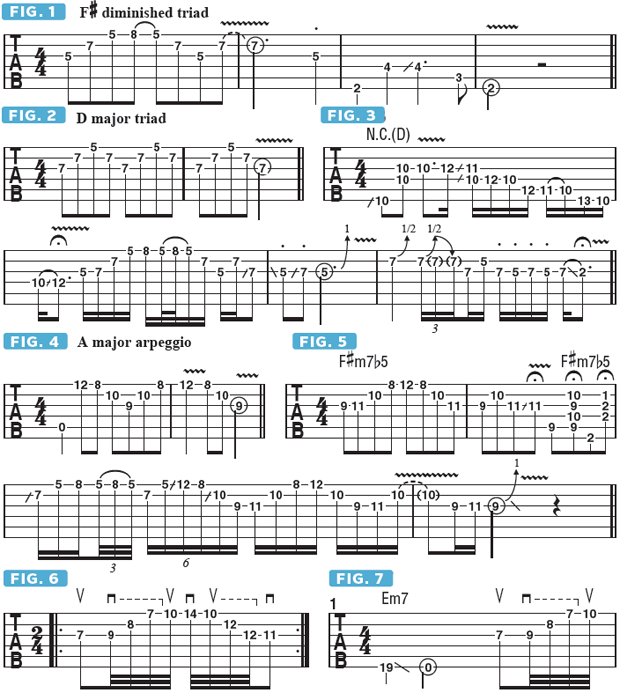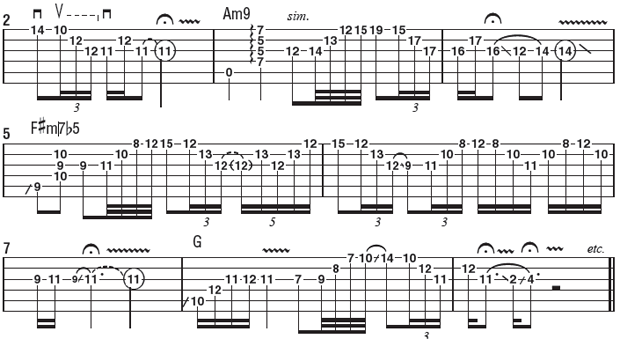John Petrucci Lesson: Combining Triad Arpeggios to Form Polytonal Chordal Allusions
Learn how to use triadic arpeggio forms within your riffs and solos as a tool to create rich-sounding, poly-chordal sounds.

I often use triadic arpeggio forms within my riffs and solos as a tool to create rich-sounding, poly-chordal sounds. I’d like to continue in that vein by presenting different ways in which to move from one arpeggio form to another, using a series of specific triads that complement one another well.
Let’s start with the triads F# diminished and D major, as shown in FIGURES 1 and FIGURE 2, respectively. The F# diminished triad is built from the notes C, F# and A, and the D major triad is built from almost the same set of notes, D, F# and A.
Both FIGURES 1 and 2 show these triads as played in fifth position for comparison. If I wanted to get a bluesy vibe, I’d use the D major triad and combine it with the F# diminished triad, as demonstrated in FIGURE 3. Here, the C note is heard as the b7 (flat seventh) of D, implying a D dominant-seven tonality. Now let’s try combining the F# diminished arpeggio with an A minor arpeggio—A C E—as shown in FIGURE 4. The combination of these two sets of notes gives an F#m7b5 arpeggio (F# A C E: see FIGURE 5).
These licks work well over an Am chord, as the inclusion of the F# note, the major sixth of A, implies an Am6, A Dorian–mode type of sound. As you probably have noticed, all of these arpeggios are played on the top three strings, and I often like to incorporate sweep picking when using arpeggios like this.
FIGURE 6 illustrates a combination of an Em7 arpeggio—E G B D—and a Gmaj7 arpeggio—G B D F#. As denoted in the example, in order to sweep pick these arpeggio shapes properly, begin with an upstroke on the first note and then use a single down-stroke to rake across the top three strings to play the next three notes. The form ends with another upstroke. I then slide up to 10th position and reverse the process, beginning with a down-stroke and then using a single upstroke to rake across the top three strings, moving from high to low.
FIGURE 7 offers an example of applying this approach to the chord progression Em7 Am9 F#m7b5 Gmaj7. This is the last installment of Wild Stringdom for now. I hope these columns have been useful to you and have served to broaden your knowledge of the guitar while building up your chops. Thanks for reading, and I’ll see you out on the road!


All the latest guitar news, interviews, lessons, reviews, deals and more, direct to your inbox!
